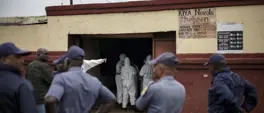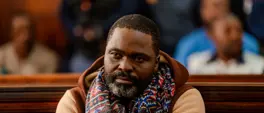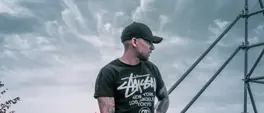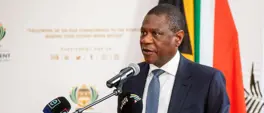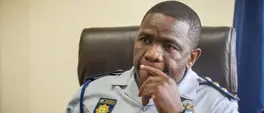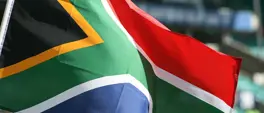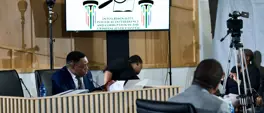YONELA DIKO: Celebrating 30 years of the contested terrain that is government comms
Yonela Diko
1 April 2024 | 11:00Viewing government through negative reporting in the media is a manifestation of a mindset, rather than reporting on experience with services. But much needs to be done to achieve unity within government communications, writes Yonela Diko.
One of the primary tasks of our first democratic government was to set up, mostly from the ground up, institutions of government.
Some institutions were set up immediately as essentials for any functioning democratic government, while others were formed after a few years of experience.
The Department of Government Communications and Information Systems (GCIS) is one of the institutions that were formed after a few years, when it became clear that government needed much more coordinated, professional, and effective communication.
Before establishing GCIS in 1998, the new democratic government formed the Communications Task Team (ComTask) to identify the best methods and structures for government to communicate effectively with its citizens.
The ComTask went to work immediately, eventually identifying twin tasks upon which government communication would be built, improved, and sustained over time.
The first critical component of government communication identified by the ComTask team was a need to imbue an appreciation of government communication as a 'strategic element of service delivery'.
Citizens were not only entitled to food, water and shelter, but also to information about the work of their government, what their freedoms and responsibilities are, where they can access opportunities, find resources and services to fully participate in the building of their own lives, and properly measure the work of their government.
The second component related to how government should manage public perception about its work and about its performance.
In the most ideal sense, public perception about government is informed by people’s own experiences with government services and programmes.
In the real sense, there are parties between government and its people who mediate the information provided by government. But these mediators are not without specific interests of their own.
COMMUNICATIONS AND THE MEDIA
The main aim of reviewing government communication was to first ensure government communicates with one voice. It was also to professionalise government communication, and to improve coordination, to provide an effective and efficient communications service.
Government communications structures were formed first with GCIS, and later other institutions, including the Government Communicators Forum, Media Liaison Officers Forum, Communication Clusters, and others, to ensure that government speaks with one voice
The new dispensation ushered in 1994 also signalled strongly a new era of media freedom. Media has enjoyed this freedom fully, reporting on every aspect of government services and people’s livelihoods. There have been great changes in media personnel over time, with more black journalists and editors coming into the fold.
Even as changes in the newsrooms have been largely positive, the media reporting about the work of government has tended to be more negative and almost oppositional in its posture. Viewing government through such negative reporting is a manifestation of a mindset, rather than reporting on experience with services.
EMERGING CHALLENGES IN THE MEDIA SPACE
The new government realised that its message reached the citizens through mediated platforms of the media not devoid of their own interests. In this regard, issues such as media diversity and media ownership became areas of great interest. Another government institution, the Media Diversity and Development Agency (MDDA), was formed to look into these issues.
Attached to the issue of media ownership and diversity came other issues, such as pace of transformation of the newsroom, and its juniorisation as it transformed.
Was media transforming at pace with the society within which it was reporting? And how do we separate real public opinion and views of the newsroom?
Newsrooms organised under the South African National Editors Forum (SANEF) went on to acknowledge their own skills shortage, and very rarely, the lack of transformation. A Forum for Black Journalists was also formed to look into journalistic standards and interests of black journalists as they enter higher positions in the newsroom.
THE MEDIA AND SOCIAL REALITY
Government has continued to appreciate media as an inherent and integral part of a thriving democracy. It equally appreciates that while media is part of the democratic reality, they have a tendency not only to interpret reality, but to also create it.
The media’s ability to mass produce messages has the potential to shape society’s psyche about their own government. If the country thinks the entire African National Congress (ANC) government is corrupt, that perception is a direct result of what media shows daily, regurgitated from one mass media to another so that the entire State apparatus is seen in that degenerative light.
As a result, our own reality becomes a product of media invention. We ultimately turn to base our views on the select information the media tells us.
What then is the effect of mass media on our country, and how should government Communication respond? What view of our country does the media wants us to have? How much can we trust this media view? How does the media decide what to put out and what not to? Are they deciding alone, or with other special interests?
All these realities have influenced the effectiveness, or lack thereof, of government communication.
A CONTESTED TERRAIN
The contest between what the government would like to communicate about its work to the public (mostly positive), and what the media ultimately tells the people about their government (mostly negative) has inevitably made the work of government communicators extremely difficult, with occasional antagonism between media and government.
This is not a uniquely South African phenomenon.
Despite efforts of government for the media to focus more on its positive work, it is mostly drawn to government leaders themselves (mostly their personal lives), ultimately creating caricatures of government leaders, an image that then informs what remains in the people’s psyche, which ends up overshadowing their work.
This has resulted in a reactionary approach of government communication, where each department and each leader of that department communicates to counter a media narrative about its services and its leaders, and not to communicate as part of an overall integrated, coordinated, unified voice of government.
Government communication therefore scatters, dealing instead with each leader and department’s reactionary communications, disintegrating the power of government to use its voice to send a mass message, resulting in government communication becoming indistinguishable noise.
The contest for information about the work of government is no longer between government communicators and the media, but the people themselves, through people’s access to information and social media.
People are now their own communicators, and sometimes trust each other’s views more than mainstream media and government communication.
The one risk about people themselves being each other’s source of information is social currency. This means most people don’t always share the truth, or don’t have enough information to share an educated view, sharing instead a view they see as popular for their own social currency. This ends up creating a saturated media space, where it is difficult to separate truth from lies.
THE NEXT 30 YEARS
Government must intensify its efforts of ensuring it speaks with one voice, across multiple platforms, in a repetitive and consistent manner. This means its message set out in the State of the Nation Address, and how that message will be funded in its Budget speech, must be a message of all government departments and communicators throughout the year.
Government communicators, starting with the President and ministers, must minimise off-the-cuff messages that have the potential to create confusion and unwanted headlines.
Secondly, there must be an appreciation of the psychology of the citizens. People think more in terms of narratives than information, so whoever dominates the creation of narratives controls the mind of the citizens in this contested media terrain.
Thirdly, government must double its information sharing efforts to counter the negative narratives and eliminate all manner of half-baked truths.
Government communication must also have a clear purpose. If the purpose is to communicate a competitive government that wants to create the best experiences in all areas of public service, then all government messages must carry this purpose whenever they are released.
Government must endeavour to master all areas of communication, from media liaison to public relations, digital media to media production, and all government events must be developed and carried out with high levels of professionalism and excellency.
Government is a brand which must be protected, promoted, and respected.
Yonela Diko is the former spokesperson for the ANC in the Western Cape.
Get the whole picture 💡
Take a look at the topic timeline for all related articles.




